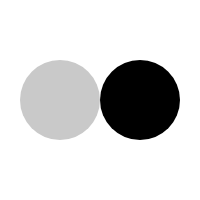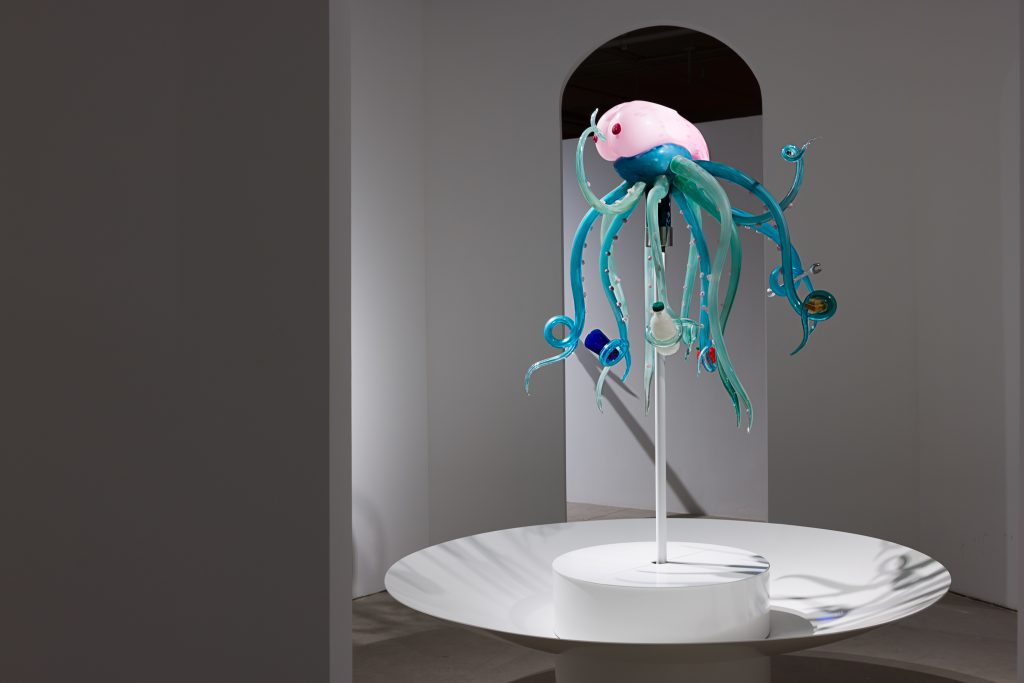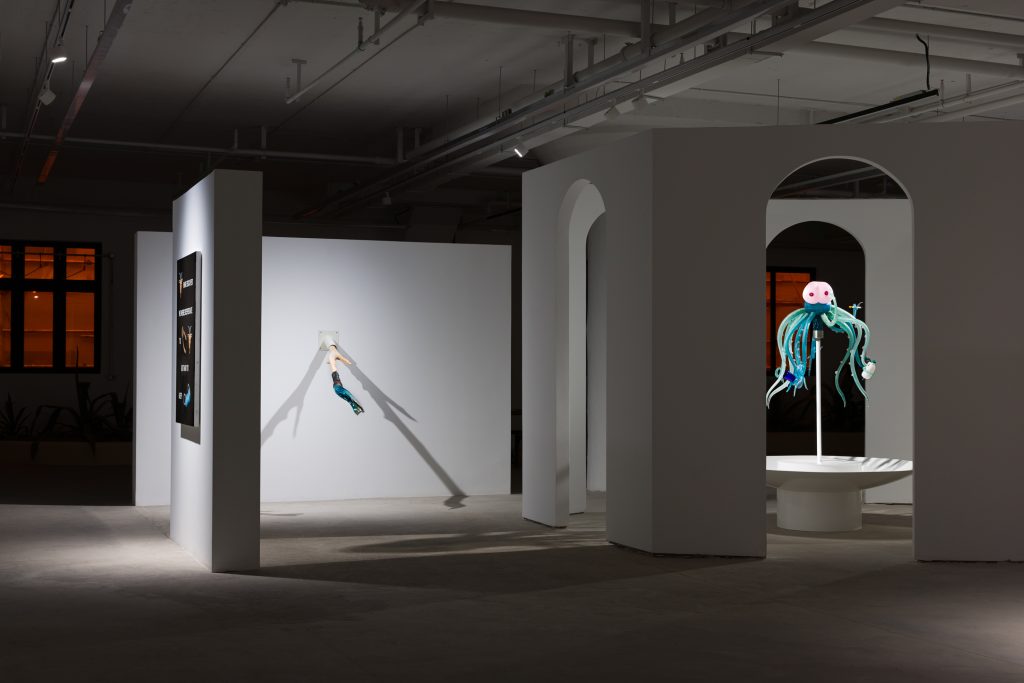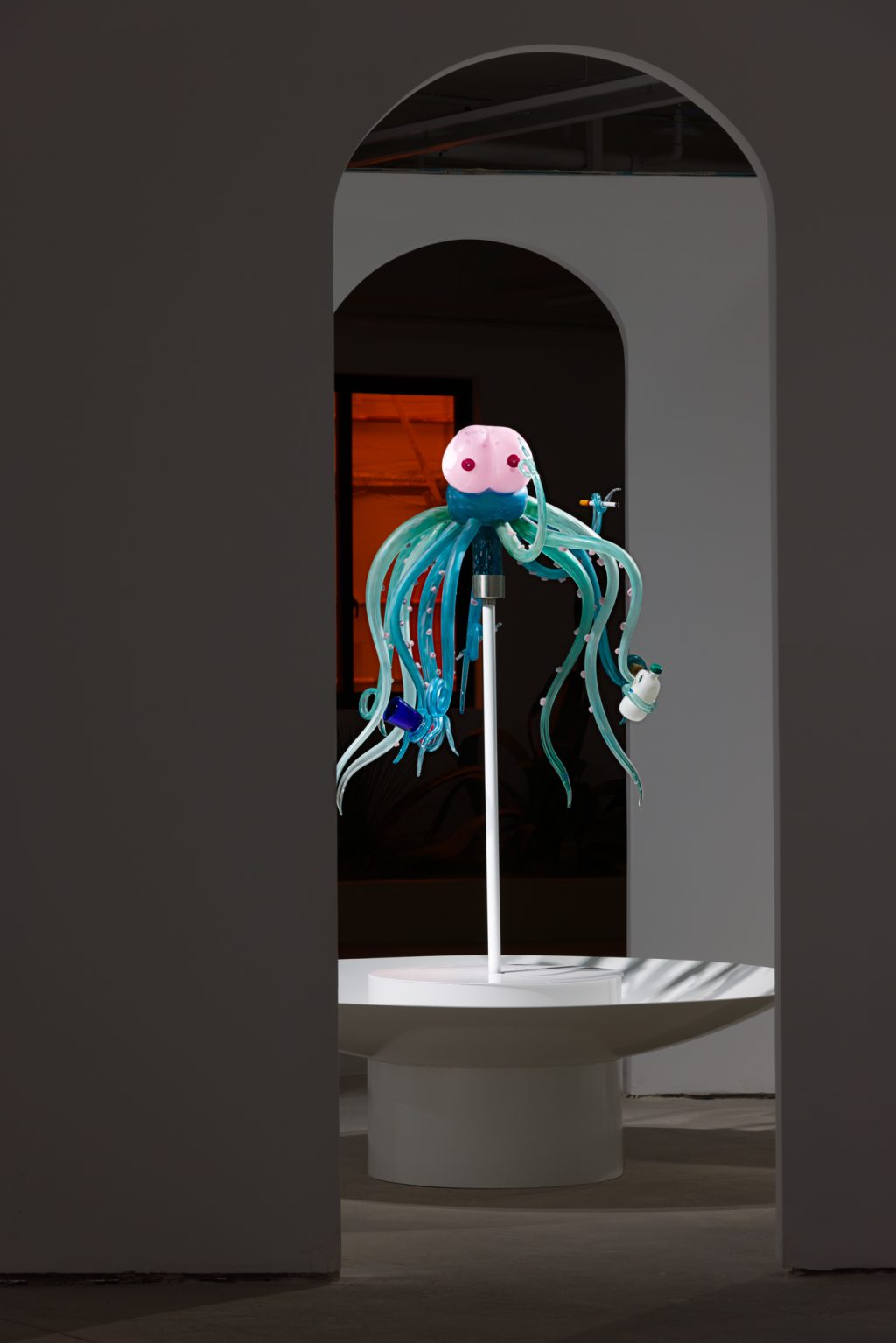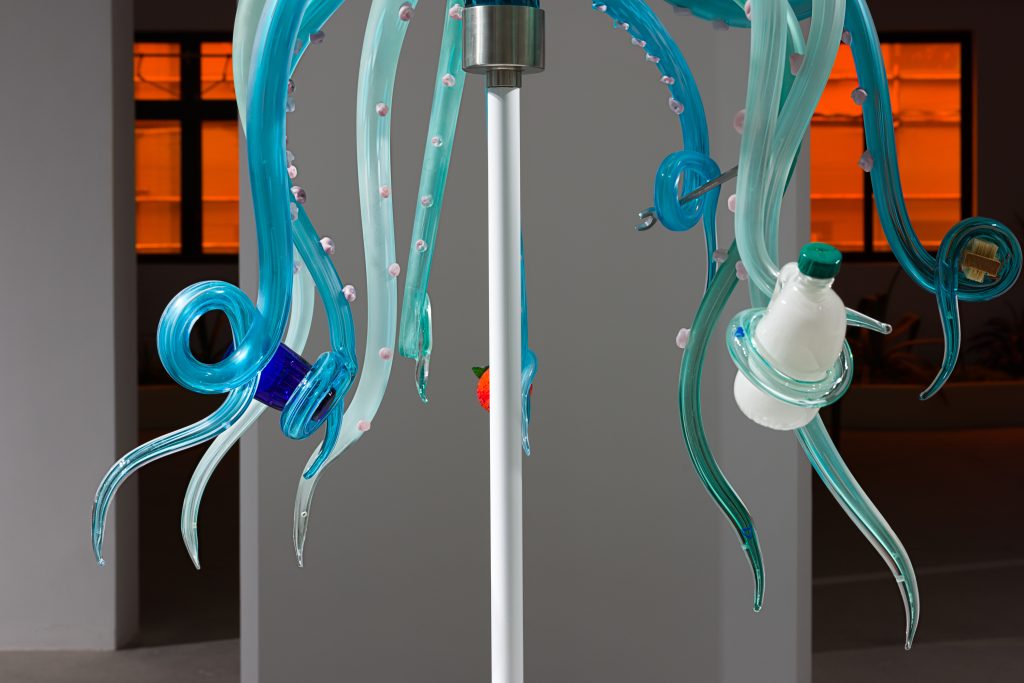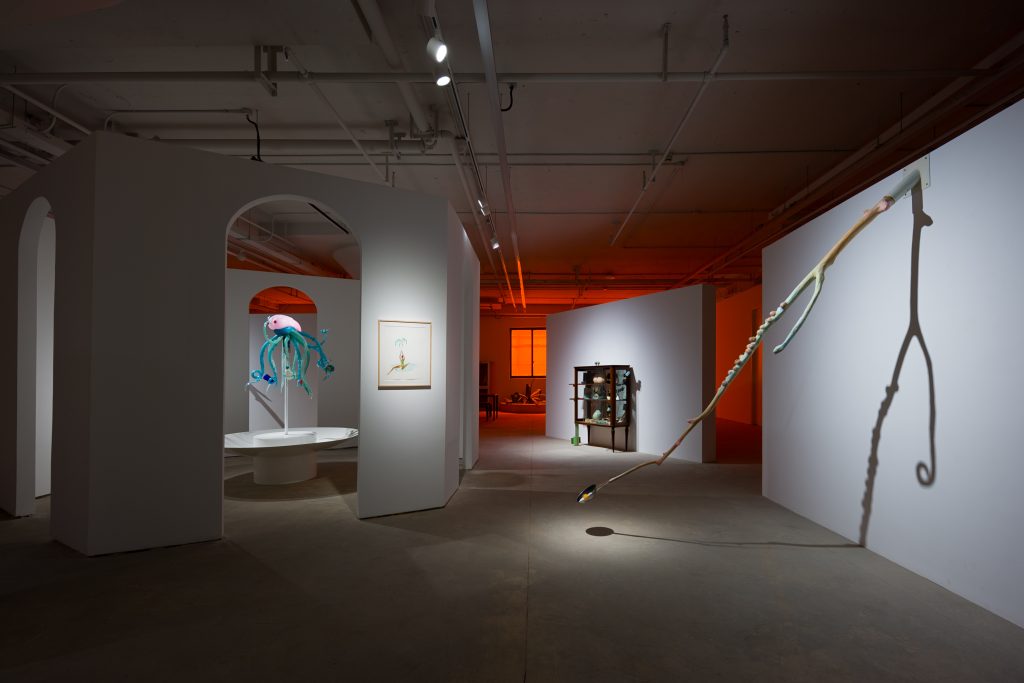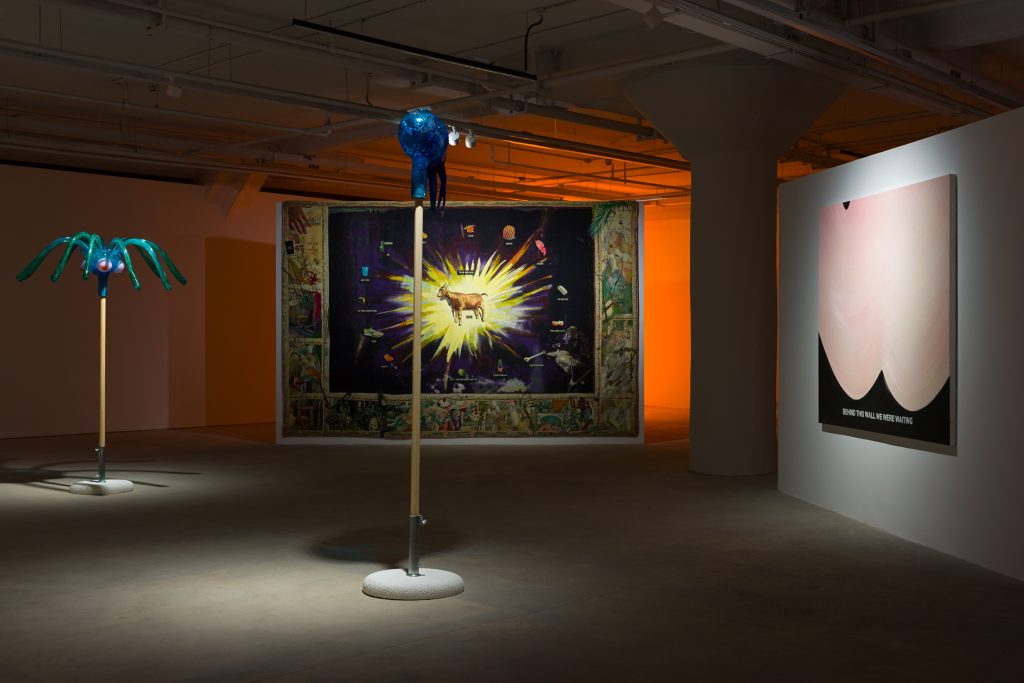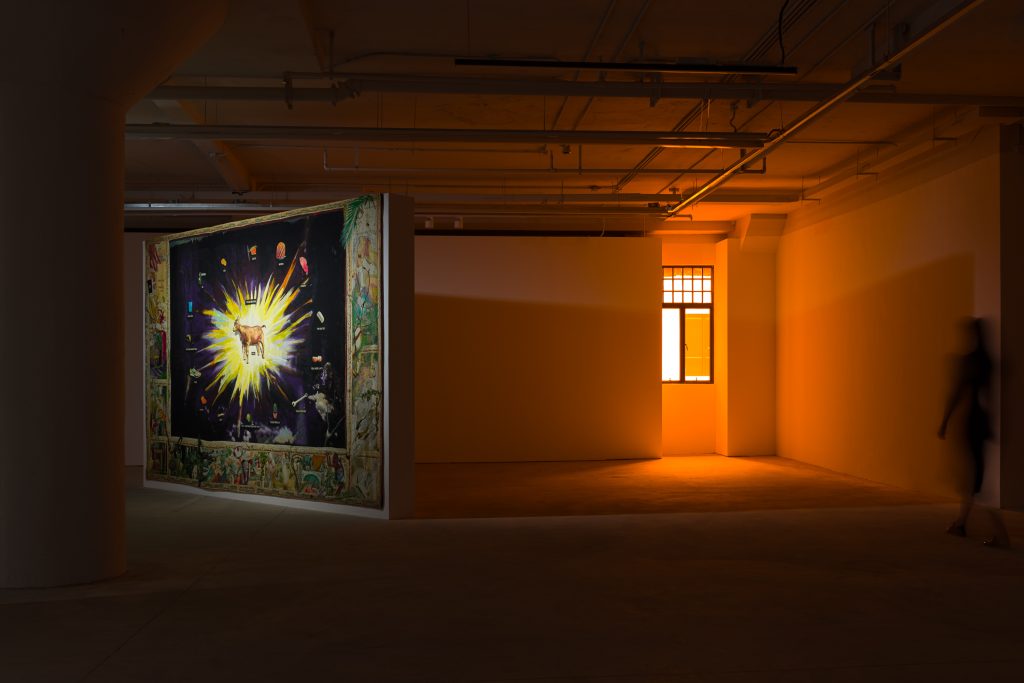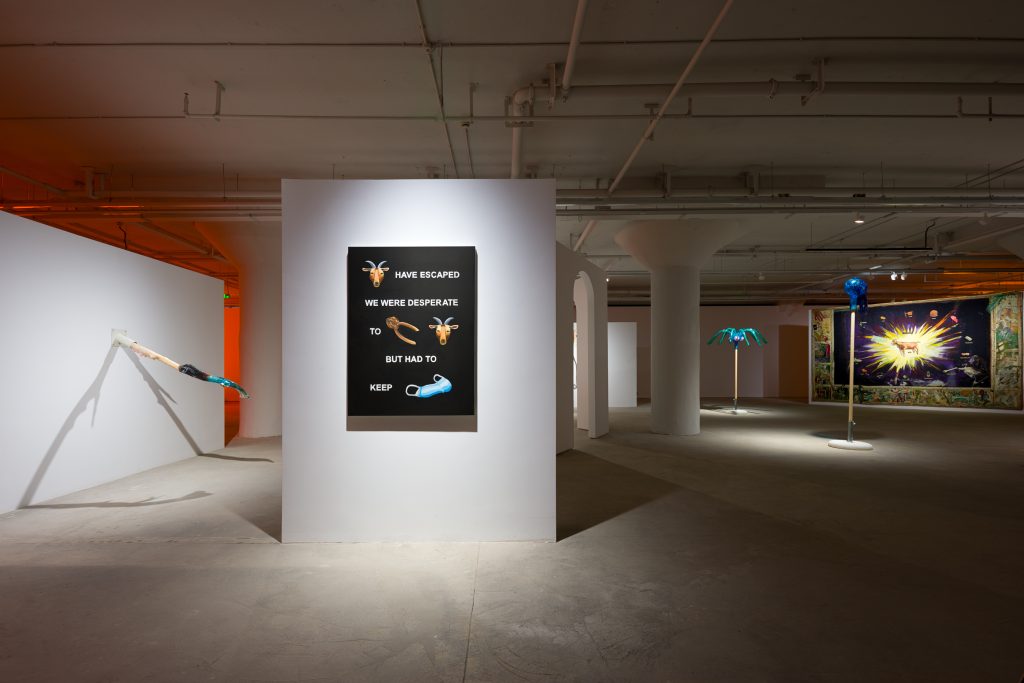TextualExhibition Text
Longlati Foundation | Laure Prouvost: Theatergarden and A Be(a)stiary of the Anthropocene
Produced by Longlati Foundation, “Theatergarden and A Be(a)stiary of the Anthropocene” presents its collection of paintings and glass sculptures by Laure Prouvost (b.1978, Lille, France) along with an array of mediums that span installation, hand-woven tapestry and video from the artist’s recent practice. The body of work portrays the disorientation of life-(trans)form in the face of global climate change, while mapping the precariousness of modern language beyond sociopolitical confines.
The very title of the display draws inspiration from the groundbreaking exhibition “Theatergarden Bestiarium”, organised by Chris Dercon and premiered in 1989 at the Institute for Contemporary Art, P.S.1 Museum, New York. Derived from the text “Bestiarium: Theater and Garden of Violence, War and Happiness” by Rüdiger Schöttle, the curatorial adventure harnesses the classical model of Baroque and Rococo gardens, and crystallises more than 10 artists’ ideas into an imaginary field where the natural and the artificial worlds merge.
Longlati Foundation seeks to examine the affinities in form and intent across the immersive inheritance throughout the history of exhibition-making beyond the generic expansion of the white wall. In this vein, “Theatergarden and A Be(a)stiary of the Anthropocene” investigates the composition of a Chinese classical garden and converts the gallery into a conservatory accordingly, thus constituting an existential ground for reconceiving the embodied rhetorics in Prouvost’s oeuvre. Her sculptural assemblage of hybrid creatures intersperses the bedding plants freely and articulates the remnants of preverbal accounts indicated in the rest works, in which shapes of human and non-human apparatuses are displayed in various layers of surreal or quirky embellishment, then carefully configured to incarnate the tension between serenity and cruelty.
Zygmunt Bauman once applied the term “garden” as a convincing analogue for modern society, which has to be designed and maintained in a shaped form by compulsion. The garden maker is responsible for offering proper solutions for growth and eliminating disruptive influences, in order to “divide vegetation into ‘cultured plants’ to be taken care of.” 1 His theory of a gardening state resonates with today’s anthropocenic conditions and processes where the viscous entities of hyperobjects 2, as proposed by Timothy Morton, including biomutations or novel viruses disobey the rational framing of the established Earth system. In “Theatergarden and A Be(a)stiary of the Anthropocene”, Prouvost questions whether the paradigm of cultivation works as a way out of the upcoming catastrophe or actually it brings up “other” forms of belonging to space, place or landscapes.
It is worth noting that Prouvost has also developed an alternative ideographic language as a means of subverting established lexicons and encouraging “de-learning”. This playful approach to words and their meanings is evidenced in the slippage between texts and images in Prouvost’s practice and in the titles she selects for her works. In pursuing this approach, Prouvost invites the audience to decode and reinterpret their own narratives and histories, while encountering the “nature” in the exhibition.
Notes:
1. Zygmunt Bauman, Modernity and the Holocaust. New York: Cornell University Press, 1989.
2. Timothy Morton, Hyperobjects: Philosophy and Ecology After the End of the World. Minneapolis: University of Minnesota Press, 2013.
Date: 2022.7.15
